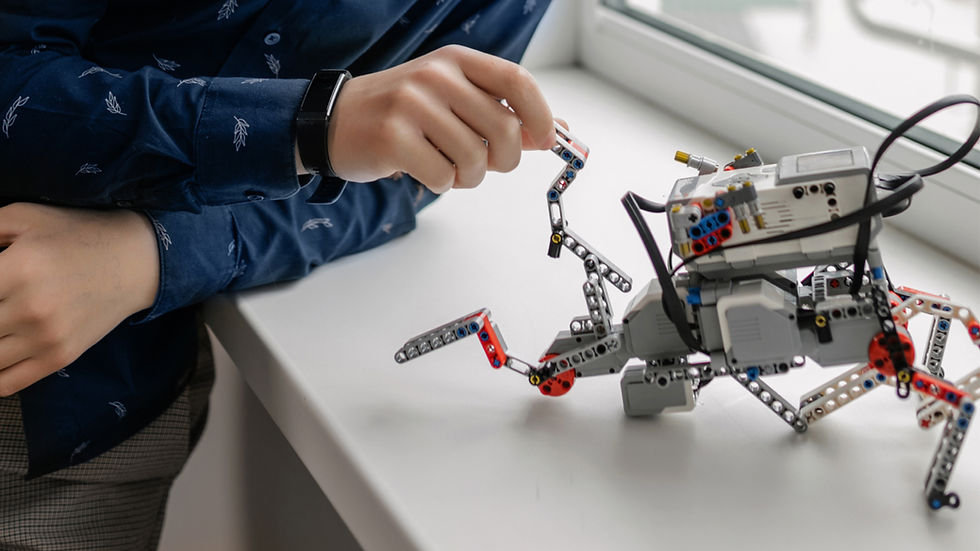The Six Stages of Behavioral Change
- Mark Meijer

- Feb 23, 2022
- 4 min read
Updated: Apr 14, 2022

A major factor when trying to inspire change or refocus your team as a manager is how to make those changes stick. This is where lasting behavioral change comes into play. People try to actively make individual habit changes, such as getting fitter, quitting smoking, learning a new language, but in order for any of these to stick it needs to become a deep-rooted behavioral change, rather than a superficial one. In business, this is no different. If you want to make a lasting change within your team, then you can use techniques from behavioral science to implement these switches and create a more cohesive, efficient team.
The six stages of behavioral change is a theory from the late 70’s by researchers James Prochaska and Carlo DiClemente when they were looking for ways for people to quit smoking for good, but since then it’s been applied to a multitude of fields, including business and people management.
Precontemplation
Sometimes known as the denial stage, this is the initial point in the change cycle where people don’t necessarily think that their behavior is a problem - that they don’t need to change. This is where you need to question what will happen if this behavior, or management style, continues. Is this a sustainable way of doing things? Burying your head in the sand isn’t going to help you contribute to behavioral change - if there’s a problem, how are you going to solve it?
Contemplation
This brings us onto the contemplation faze. This is where you’re aware that something needs to change, but you’re conflicted about how to go about it, or even if the benefits outweigh the costs. Due to this conflict, this stage can take months and sometimes even years to get out of. This being said, a great way of moving this stage forward is to create a pros and cons to this change, and ultimately, identifying those crucial barriers that are blocking you from creating this lasting behavioral change.
Preparation
Once you’ve outlined the barriers to creating lasting behavioral change, and that something needs to happen, you can move onto the preparation stage. This is where you can experiment with small changes and work out what works well, and what might not be a great fit for you or your team. Additionally, this is a great time to begin gathering data and ideas from others - your team members themselves might have some useful ideas about how to enact this change, so this would be the stage where those brainstorming sessions might occur. The cumulation of this stage, would be a tangible plan of action, which has been informed by your experimentation and the outcomes of your forums.
Action
The action stage is exactly what the name suggests. It’s where you take the plan that you’ve created and really drive it into action. By all means, tweak it here and there if circumstances change, but this is where implementation really takes hold. It’s at this stage where it can be difficult to stick to this change in a long-term way, so perhaps use rewards or motivational statements to incentivize your team and their efforts. Behavioral change isn’t going to happen overnight, so keeping your team focused, driven, engaged, and enthusiastic about making this positive change a reality is crucial.
Maintenance
So, once you’ve implemented your behavioral change plan, in whatever form that might take, it’s now your job, as a leader, to maintain that positive change. This could be by using the similar reward techniques that you use in the action phase of this process, or it could be figuring out coping strategies to avoid temptation. By creating these contingency plans for when you think you or your team might divert from the new course of action, you’ll be prepared and be able to get things back on track in an efficient manner. Embedding a reward structure, together with these coping mechanism, you’ll create a culture that is a lot more sustainable in the long term.
Relapse
It’s inevitable that at some point, you or your team, despite the rewards, planning, and coping strategies, will relapse into your old ways. Whether this is logging on at a weekend, or working in a silo-ed way, rather than a collaborative one, or whatever you’ve identified as the issue, it’s bound to happen. The crucial thing about relapsing is not to get frustrated or disheartened and remember why this change was necessary in the first place - use that positive pros list that you identified early to remind yourself of why the change is worth it. Mindset is critical when inspiring and implementing meaningful, lasting behavioral change.
It might seem like a lot of work, but by using these six simple steps over a period of time, will be much more worthwhile than repeatedly asking for small, superficial changes from your team. Changing the behavior of an entire team so that they’re more focused and driven when it comes to your wider strategy and vision is no small task, but the benefit of having a cohesive culture that pulls together to deliver, day after day, cannot be understated.
Please subscribe to my blog about leading turnarounds, change and people
H. Mark Meijer, a native of the Netherlands, resides permanently in New York City Metro since 2018 and is the President of Changefaster.com Management & Consulting and specializes in post M&A turnaround of mid-sized PE portfolio companies with a footprint in NW Europe, the Netherlands and USA.




